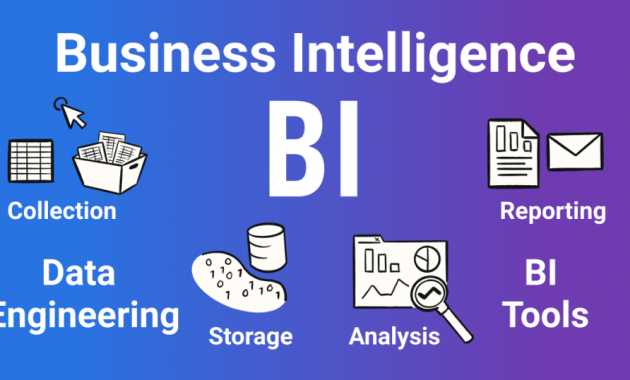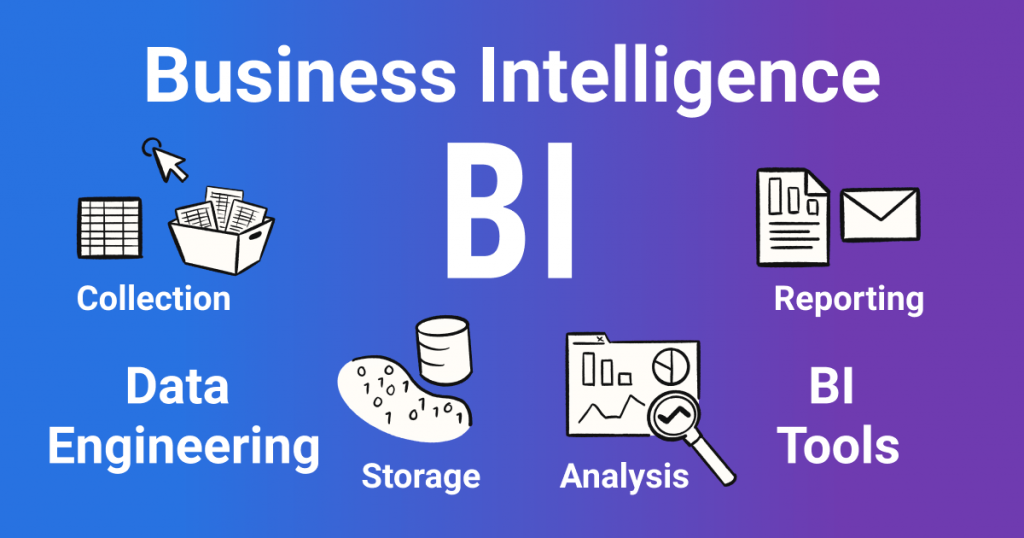
Unlocking Insights: How Business Intelligence Tools Revolutionize Commentable Reports
In today’s data-driven landscape, businesses are drowning in information. The challenge lies not in acquiring data, but in extracting meaningful insights and communicating them effectively. This is where Business Intelligence (BI) tools come into play, offering powerful capabilities for data analysis, visualization, and reporting. However, the true power of BI extends beyond simply presenting data. It lies in fostering collaboration and facilitating a deeper understanding through commentable reports. This article delves into the transformative impact of Business Intelligence tools in creating and leveraging commentable reports.
The Evolution of Reporting: From Static to Interactive
Traditional reporting often involved static documents: spreadsheets, PDFs, and presentations. While these formats provided a snapshot of data, they lacked interactivity and context. Analyzing data required a separate process, often involving email chains, meetings, and manual annotations. This fragmented approach hindered collaboration and slowed down decision-making.
The advent of Business Intelligence tools marked a significant shift. These tools offered interactive dashboards, drill-down capabilities, and data visualization features. Users could explore data in real-time, identify trends, and uncover hidden patterns. However, even with these advancements, the ability to collaborate directly within the report remained limited. The need for commentable reports emerged as a crucial next step.
The Power of Commentable Reports: Collaboration and Context
Commentable reports are more than just data visualizations; they are dynamic platforms for collaboration and knowledge sharing. They allow users to:
- Add context: Users can provide explanations, interpretations, and insights directly within the report, enriching the data with valuable context.
- Facilitate discussion: Comments enable users to ask questions, share perspectives, and discuss findings, fostering a collaborative environment.
- Track progress: Comments can be used to track the progress of projects, identify bottlenecks, and monitor key performance indicators (KPIs).
- Improve decision-making: By providing a platform for collaboration and discussion, commentable reports empower users to make more informed and data-driven decisions.
Business Intelligence tools that support commentable reports are therefore invaluable. They bridge the gap between data and understanding, transforming reports from static documents into dynamic hubs of information and collaboration. This leads to much more efficient workflows and better decisions for your company.
Key Features to Look for in Business Intelligence Tools for Commentable Reports
Choosing the right Business Intelligence tool is crucial for maximizing the benefits of commentable reports. When evaluating different tools, consider these key features:
Seamless Commenting Functionality
The ability to add, edit, and reply to comments directly within the report is essential. The commenting interface should be intuitive and easy to use, allowing users to quickly share their thoughts and insights. The best tools allow for rich text formatting, including bolding and italicizing text.
User-Friendly Interface
The interface should be clean, intuitive, and easy to navigate. Users should be able to easily access and understand the data presented in the report. The ability to customize the report’s layout and appearance is also important.
Integration with Data Sources
The tool should seamlessly integrate with various data sources, including databases, spreadsheets, and cloud-based platforms. This allows users to access and analyze data from multiple sources within a single report. Many of the top Business Intelligence tools on the market today are designed to connect with almost any data source.
Collaboration Features
Besides commenting, look for features that promote collaboration, such as user roles and permissions, version control, and the ability to share reports with specific individuals or groups. The best Business Intelligence tools will integrate well with other collaboration platforms.
Data Visualization Capabilities
The tool should offer a wide range of data visualization options, including charts, graphs, and maps. This allows users to present data in a clear and concise manner, making it easier to understand and interpret. The more choices, the better.
Real-Time Data Updates
The ability to refresh data in real-time or near real-time is crucial for making timely decisions. This ensures that users always have access to the most up-to-date information. This is extremely important in today’s rapidly evolving markets. Business Intelligence tools are designed to give you this advantage.
Benefits of Using Business Intelligence Tools for Commentable Reports
Implementing Business Intelligence tools with commentable reports offers numerous benefits, including:
- Improved Collaboration: Commentable reports facilitate a collaborative environment where users can share insights, ask questions, and discuss findings in real-time. This leads to better decision-making and improved team performance.
- Enhanced Understanding: Comments provide context and explanations, helping users to understand the data more deeply. This leads to a more informed workforce and a better understanding of the business.
- Faster Decision-Making: With real-time data updates and collaborative features, users can make decisions more quickly and efficiently. Information is available for everyone.
- Increased Efficiency: By streamlining the reporting process and eliminating the need for lengthy email chains and meetings, commentable reports save time and resources. Your team will work more efficiently.
- Better Data-Driven Decisions: Commentable reports empower users to make decisions based on data, rather than gut feeling. This leads to more accurate and effective decisions. Data-driven decisions are better decisions.
Examples of Business Intelligence Tools with Commenting Capabilities
Several Business Intelligence tools offer robust commentable report features. Here are a few examples:
Tableau
Tableau is a popular Business Intelligence tool known for its data visualization capabilities and ease of use. It offers commenting features that allow users to add notes and annotations directly within the dashboards and reports. This makes Tableau a great choice.
Microsoft Power BI
Power BI is a powerful and versatile Business Intelligence tool that integrates seamlessly with other Microsoft products. It offers commenting capabilities that allow users to collaborate and share insights within the reports. Power BI is a great option for Microsoft-centric businesses.
Looker
Looker is a modern Business Intelligence tool that emphasizes data governance and collaboration. It offers commenting features that allow users to discuss findings and share insights directly within the reports. Looker is an excellent choice for data-driven organizations.
[See also: Choosing the Right BI Tool for Your Business]
Implementing Commentable Reports: Best Practices
To maximize the effectiveness of commentable reports, consider these best practices:
- Define clear roles and responsibilities: Clearly define who is responsible for creating, reviewing, and commenting on reports. Everyone should know their role.
- Establish a commenting protocol: Set guidelines for how comments should be used, including the types of information to include and the tone of the discussion.
- Train users on the tool: Provide training on how to use the Business Intelligence tool and its commenting features. Training is essential to success.
- Encourage active participation: Encourage users to actively participate in the commenting process and share their insights.
- Monitor and analyze comments: Regularly monitor and analyze comments to identify trends, insights, and areas for improvement.
By following these best practices, you can ensure that commentable reports are used effectively to drive collaboration, improve decision-making, and achieve business goals.
The Future of Business Intelligence and Commentable Reports
The integration of Business Intelligence tools with commentable reports represents a significant advancement in data analysis and collaboration. As technology continues to evolve, we can expect to see even more sophisticated features and capabilities, including:
- Enhanced collaboration features: Integration with other collaboration platforms, such as Slack and Microsoft Teams.
- Advanced analytics: The use of artificial intelligence (AI) and machine learning (ML) to automatically generate insights and recommendations.
- Improved data governance: More robust data governance features to ensure data accuracy and security.
- Mobile accessibility: The ability to access and collaborate on reports from anywhere, anytime.
Business Intelligence tools will continue to evolve. The future of Business Intelligence is undoubtedly bright. By embracing these advancements, businesses can unlock even greater value from their data and make more informed decisions. Businesses must adapt to these changing times.
Conclusion: Embracing the Power of Collaboration
Business Intelligence tools with commentable reports are essential for businesses looking to unlock the full potential of their data. By fostering collaboration, providing context, and facilitating discussion, these tools empower users to make better decisions, improve efficiency, and drive business growth. In the age of big data, the ability to transform raw information into actionable insights is more critical than ever. Embracing these tools and their features will give your company a competitive advantage.
By implementing the best practices outlined in this article, organizations can leverage the power of commentable reports to achieve their business goals and thrive in today’s data-driven world.
[See also: Data Visualization Best Practices]

